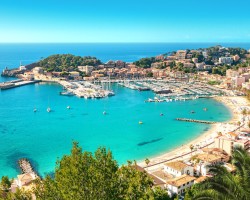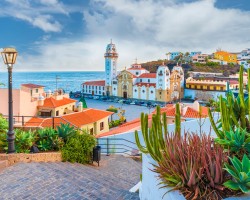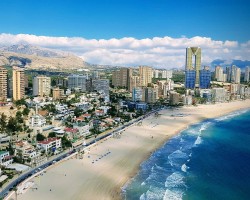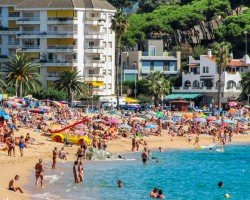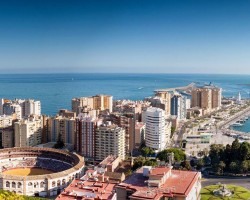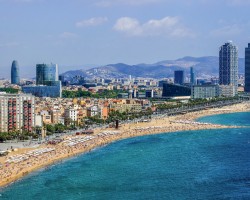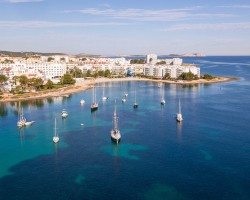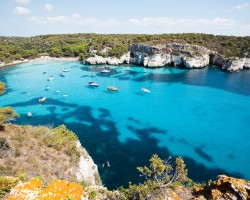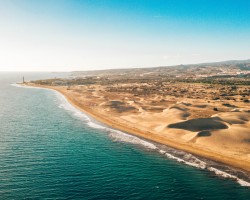Best time to go to Spain for a perfect weather and where to go?
When is the best time to go to Spain?
In general, the best time to visit Spain is from April to November, as the weather conditions will be ideal throughout the country and conducive to beautiful discoveries. However, there may be some regional variations:
- For a stay in Andalusia, know that the climate is favorable from March to December. As the region is located in the south of the country, temperatures are higher and precipitation is lower. However, the months of July and August are particularly hot. If you are sensitive to heat, summer may not be the ideal time unless you want a beach trip. Additionally, it is the peak tourist season, so it should be avoided if you don't like crowds.
- The Madrid region is also very hot and crowded in July-August. If you want a quieter atmosphere and a milder climate, opt for a less busy month like June or September.
- Along the Atlantic coast and towards Bilbao or Santander, rain is often present, and the best season is shorter, from May to October. It is especially in summer, from July to September, that temperatures allow you to fully enjoy the region, with beach breaks and hikes in the hinterland.
- In the North, especially towards the Pyrenees, as well as in the Center, cold weather can still be biting in spring and late autumn. Therefore, it is best to choose the period from May to October.
- On the Canary Islands, on the contrary, a trip is possible all year round. It's no wonder they are called "the islands of eternal spring"!
- Throughout the country, it is important to know what to expect during Holy Week: while it is an extraordinary tradition to witness, all hotels are fully booked months in advance, there are a lot of people, and prices are very high.
When to visit Spain? In summary, the ideal times for a trip through several regions are the shoulder seasons: spring (May-June) and autumn (September-October). In summer, from July to September, it is best to choose the northern part, which is cooler and less crowded, while in winter, between December and March, a stay in the far south, for example by visiting the loop Seville-Cordoba-Granada, is entirely feasible.
Where and when to go based on the weather?
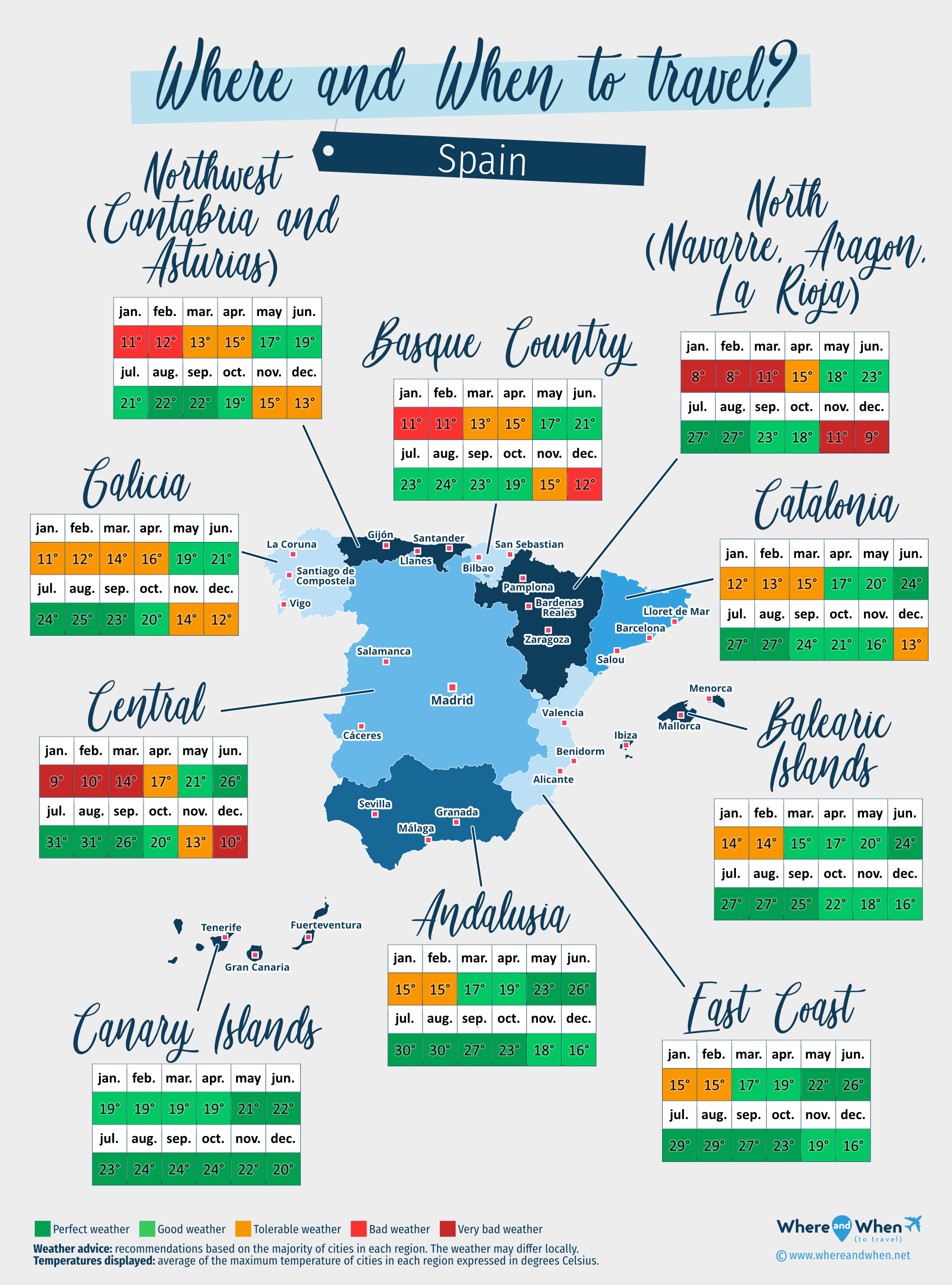
Andalusia
Sevilla, Malaga, Granada...
Balearic Islands
Minorca, Ibiza, Majorca...
Basque Country
Bilbao, San Sebastian, Zarautz...
Canary Islands
Gomera, El Hierro, Gran Canaria...
Catalonia
Barcelona, Salou, Lloret de Mar...
Central of Spain
Madrid, Salamanca, Cáceres...
East Coast of Spain
Valencia, Alicante, Benidorm...
Galicia
Vigo, Santiago de Compostela, A Coruña...
North (Navarre, Aragon, La Rioja)
Zaragoza, Pamplona, Bardenas Reales...
Northwest (Cantabria and Asturias)
Santander, Gijon, Llanes...
To get all the information about the climate and weather in Spain for a specific month, click on the corresponding link below:
Spain in january Spain in february Spain in march Spain in april Spain in may Spain in june Spain in july Spain in august Spain in september Spain in october Spain in november Spain in december
Best time to travel to Spain by cities
Climate and Weather in Spain
Located in southern Europe, Spain enjoys generally sunny weather and pleasant conditions for much of the year. The presence of the Mediterranean Sea and the Atlantic Ocean, as well as its numerous mountain ranges (it is the second most mountainous country in the continent), have a strong impact on the weather conditions.
Thus, Spain's climate can be classified into 4 main types:
- A hot Mediterranean climate can be found around Madrid and in parts of the central region, Andalusia, Catalonia, the Valencia region, and the Balearic Islands.
- A temperate oceanic climate prevails over a large northern part: from Pamplona to Santander passing through Bilbao.
- A temperate Mediterranean climate is present in most areas bordering Portugal: around Salamanca, Galicia, and Asturias. It is also found in the Canary Islands, on the island of Tenerife.
- A dry and cold steppe climate is very localized, for example in Alicante, Almeria, Zaragoza, or Gran Canaria.

Climate in the Central Region
The weather in central Spain, especially on the Castilian Plateau, is characterized by extreme temperatures and well-defined seasons:
- Summers are scorching: from June to late August, temperatures average between 30 and 35°C (95°F) depending on the area, but it is not uncommon for the thermometer to climb above 40°C (104°F) in Madrid, Toledo, Merida, or Badajoz. The season is also punctuated by violent storms, but the rest of the time, the atmosphere is very dry.
- Autumn marks a rapid drop in temperatures: while late September still sees temperatures between 26°C (79°F) and 30°C (86°F) , the thermometer gradually drops in October to reach highs between 13 and 16°C (61°F) in November. In Salamanca or Burgos, it's around 5°C (41°F) at night during this period.
- Winters are harsh: December and January are the coldest months of the year with daytime averages ranging between 7 and 12°C (54°F) and nighttime lows between 1 and 5°C (41°F) . Snow is quite common, especially in Soria, Salamanca, and Burgos.
- Spring is short, from early March to May. It is the most humid period of the year, although the risk of rain remains quite low. In Soria as in Salamanca, it is not uncommon to see snow at the beginning of the season.
Climate in Northern Spain (Navarre, Aragon, La Rioja)
The ideal period to explore this part of Spain is between May and September. The weather is pleasant: it is mild in the Pyrenees region, around 20°C (68°F) in Aneto in July and August, while temperatures remain reasonable elsewhere. For example, expect 24°C (76°F) in Pamplona in June, 28°C (83°F) in August in the Bardenas Desert, 33°C (92°F) in Zaragoza in July, or 27°C (81°F) in Huesca in September.
Even in the hottest part of summer, it is rare for temperatures to exceed 35°C (95°F) . In the mountains, there can be thunderstorms, and showers are not uncommon in the plains. The rainiest months are May and June.
From November to March, or even April, it is cold and humid. In the Pyrenees, temperatures range between 3 and 7°C (45°F) , and snow is present. Further south, temperatures vary between 9 and 12°C (54°F) at the warmest part of the day. January is the coldest month, and rain is intermittent throughout the period.
Climate along the Atlantic Coast (Galicia, Asturias, Cantabria, and the Basque Country)
The Atlantic coast is particularly influenced by the Gulf Stream, giving it a mild but humid climate regardless of the season.
To visit the region under good conditions, prefer the months between May and October, especially between July and September to enjoy temperatures suitable for outdoor activities. During this time, temperatures range from 24 to 29°C (85°F) , with Galicia being the warmest region thanks to its Mediterranean climate. Inland, the mercury can rise even higher: around 35°C (95°F) near Santiago de Compostela.
For swimming in summer, it is best to go to the Spanish Basque Country, Asturias, and Cantabria where the ocean water averages 21°C (70°F) . In Galicia, it rarely goes above 19°C (67°F) .
The transitional seasons (spring and autumn) are rainy, and temperatures can be a bit cool. In April or November, for example, expect an average of 15°C (59°F) during the day in Vigo, Bilbao, or Santander, and around 10°C (50°F) at night, making terrace dinners quite challenging.
In winter, seasonal norms remain mild with temperatures around 12-13°C during the day throughout the region. However, precipitation is frequent, and even if the sun reappears, the atmosphere is humid, especially near the ocean, not to mention the frequent fog.
Climate in Andalusia
Mainly Mediterranean, the climate in Andalusia offers very mild winters on the coast and in the plains, idyllic transitional seasons, and scorching summers. Here's what to expect:
- Summer is long in Andalusia, generally from early May to late October. In July and August, temperatures are around 38°C (101°F) , but the thermometer regularly rises above 40°C (104°F) . The only way to cool off is to go to the sea, which is around 23°C (74°F) . In other months, it is more reasonable: about 29°C (85°F) in May or October and 33°C (92°F) in June and September. Precipitation is almost non-existent during this season, creating rather arid landscapes.
- Transitional seasons (March, April, and November) allow you to fully enjoy the region without suffering from the heat. It ranges between 20 and 23°C (74°F) in Seville, but the air is a bit cooler in Granada and Cadiz, between 15 and 18°C (65°F) . In Marbella or Almeria, as on the entire Costa del Sol, expect between 18 and 20°C (68°F) .
- Winter remains very pleasant on the coasts, for example, it averages 16°C (61°F) in Malaga in January-February, as in Seville. However, temperatures are cooler as you move inland: in Granada, it ranges between 12 and 14°C (58°F) from December to February. In the Sierra Nevada, with its peak at nearly 3500 meters, snow is present, much to the delight of skiers!
Climate in Catalonia and the East Coast
The weather in Catalonia is particularly pleasant from April to November, but a stay during the winter season is not to be excluded:
- During the transitional seasons (April, May, October, and November), temperatures range between 18 and 23°C (74°F) , whether in Barcelona or Tarragona. On the flip side, rain may be present, although it quickly gives way to sunshine.
- In summer, from June to August, temperatures are summery but not too hot. It reaches 30 to 34°C (94°F) on the coast with a delightful sea breeze that wonderfully refreshes the Costa Blanca. Inland, deprived of wind, the mercury rises more.
- In winter, from December to March, temperatures remain mild with averages between 14 and 18°C (65°F) , but nights can be cold, with lows approaching 3°C (38°F) and high humidity.
On the east coast of Spain, between Valencia and Alicante, the climate is warmer: expect 2-3°C more than in Catalonia. Heading south, the weather becomes more arid, so precipitation is rarer and the air drier. For example, the average temperature is 18°C (65°F) in December, 22°C (72°F) in April, and 34°C (94°F) in July-August.
Climate in the Islands
The Canary Islands
The Canary Islands are known for the warmth of their air, offering a pleasant climate and a low thermal amplitude throughout the year. In winter, between January and April, the average temperature is 19°C (67°F) , while the rest of the time, temperatures range between 20 and 24°C (76°F) at the height of summer. However, in the mountains, at over 1900 meters in height, it is not uncommon to see frost and snow.
However, be aware of this reputation, as it does not take into account the climate variation brought by trade winds, which can change everything in an instant. Moreover, different microclimates can be found on the islands, partly due to the relief.
Details: When to go to the Canary Islands?
The Balearic Islands
Most of the Balearic Islands, a small Spanish archipelago off the east coast, enjoy a warm and dry Mediterranean climate, with rather mild winters. Note, however, that there is much less rain in Ibiza, Formentera, and the southern part of Majorca than elsewhere in the archipelago.
Regarding temperatures, they are similar to those in Catalonia, with a strong exposure to prevailing winds.
Details: When to go to the Balearic Islands?
Temperatures and rainfall in Spain
On these 3 graphs, we present the evolution of temperatures of Spain and month-by-month rainfall for the cities of Madrid, Majorca, Tenerife, Alicante and Barcelona, as well as the month-by-month sea temperature for coastal cities.

Peak visitor numbers and tourist seasons in Spain
Find out when Spain has its high tourist season (the period when the influx of tourists is highest) and off-peak tourist season using our data and figures.
Tourist seasons in Spain
The months with low numbers of tourists are: January, February, March, April, November and December. The number of visitors to Spain is high in: May, June, July, August, September and October.
- Very low season in Spain: January, February, March, November and December.
- Low season in Spain: April.
- High season in Spain: May, June, September and October.
- Peak season in Spain: July and August.
Figure: Visitor index for Spain month by month
Average price for flights to Spain
A return flight between London and Barcelona is generally cheaper if you go in november ($ 75 on average): this is the best time for travellers on a tight budget. In contrast, you may end up paying $ 101 more for your airline ticket to Barcelona if you go in august.
Where to go in Spain?
This table allows you to see the maximum temperature for each city and our opinion on the weather month by month (see colour legend below the table).
| Cities | jan. | feb. | mar. | apr. | may | jun. | jul. | aug. | sep. | oct. | nov. | dec. |
| Madrid | 52°F | 56°F | 61°F | 67°F | 76°F | 86°F | 94°F | 94°F | 85°F | 74°F | 59°F | 54°F |
| Majorca | 58°F | 58°F | 59°F | 65°F | 70°F | 77°F | 83°F | 83°F | 79°F | 74°F | 67°F | 61°F |
| Tenerife | 67°F | 67°F | 67°F | 67°F | 68°F | 72°F | 74°F | 76°F | 76°F | 76°F | 72°F | 68°F |
| Alicante | 59°F | 61°F | 63°F | 67°F | 74°F | 81°F | 86°F | 86°F | 81°F | 76°F | 67°F | 61°F |
| Barcelona | 58°F | 58°F | 61°F | 65°F | 72°F | 79°F | 85°F | 85°F | 79°F | 72°F | 65°F | 59°F |
| Bilbao | 54°F | 56°F | 58°F | 61°F | 65°F | 72°F | 76°F | 77°F | 76°F | 70°F | 61°F | 56°F |
| Granada | 54°F | 56°F | 59°F | 65°F | 74°F | 83°F | 90°F | 90°F | 81°F | 74°F | 61°F | 58°F |
| Lloret de Mar | 56°F | 58°F | 59°F | 63°F | 68°F | 76°F | 81°F | 83°F | 77°F | 72°F | 63°F | 58°F |
| Malaga | 61°F | 61°F | 63°F | 67°F | 74°F | 79°F | 86°F | 86°F | 81°F | 76°F | 67°F | 63°F |
| Salou | 54°F | 56°F | 59°F | 63°F | 70°F | 77°F | 81°F | 83°F | 77°F | 70°F | 61°F | 56°F |
| Sevilla | 61°F | 65°F | 68°F | 74°F | 85°F | 94°F | 101°F | 103°F | 92°F | 83°F | 68°F | 63°F |
| Valencia | 61°F | 63°F | 65°F | 70°F | 76°F | 85°F | 88°F | 88°F | 85°F | 77°F | 68°F | 63°F |
| Ibiza | 59°F | 59°F | 61°F | 63°F | 68°F | 76°F | 81°F | 83°F | 79°F | 74°F | 67°F | 63°F |
| Minorca | 58°F | 58°F | 59°F | 63°F | 68°F | 76°F | 81°F | 83°F | 79°F | 74°F | 67°F | 61°F |
| Fuerteventura | 68°F | 67°F | 68°F | 70°F | 72°F | 74°F | 77°F | 77°F | 77°F | 77°F | 72°F | 70°F |
| Gran Canaria | 68°F | 68°F | 68°F | 70°F | 72°F | 74°F | 77°F | 79°F | 77°F | 77°F | 74°F | 70°F |
| A Coruña | 56°F | 56°F | 58°F | 59°F | 63°F | 67°F | 70°F | 72°F | 72°F | 67°F | 59°F | 58°F |
| Almeria | 61°F | 61°F | 65°F | 68°F | 76°F | 81°F | 88°F | 88°F | 83°F | 76°F | 67°F | 63°F |
| Bardenas Reales | 49°F | 50°F | 56°F | 61°F | 67°F | 76°F | 81°F | 83°F | 76°F | 67°F | 56°F | 50°F |
| Benidorm | 59°F | 59°F | 61°F | 65°F | 70°F | 77°F | 83°F | 83°F | 79°F | 74°F | 67°F | 61°F |
Legend:
perfect weather
good weather
tolerable weather
bad weather
very bad weather
About Spain
What can I do in Spain?
Beaches / swimming
Nature and countryside
Culture and heritage
Sports
Family travel
Crafts / shopping
Gastronomy
Nightlife
Is this weather information for Spain reliable?
Climate data for Spain has been gathered every day since January 2009. The analysis of these meteorological data for Spain allows us to determine the average for each month in Madrid, Majorca, Tenerife, Alicante, Barcelona, Bilbao, Granada, Lloret de Mar, and 147 other cities.
So yes: this data is reliable except in cases of temporary climate disruption in the region.


